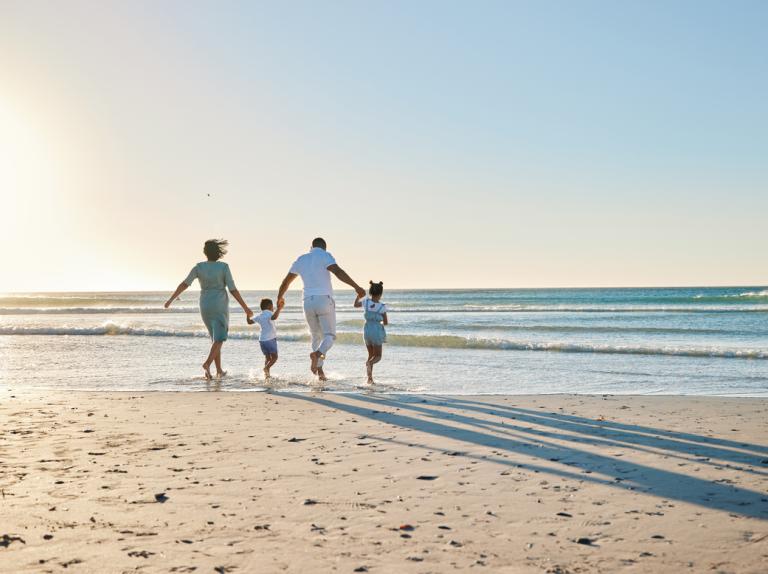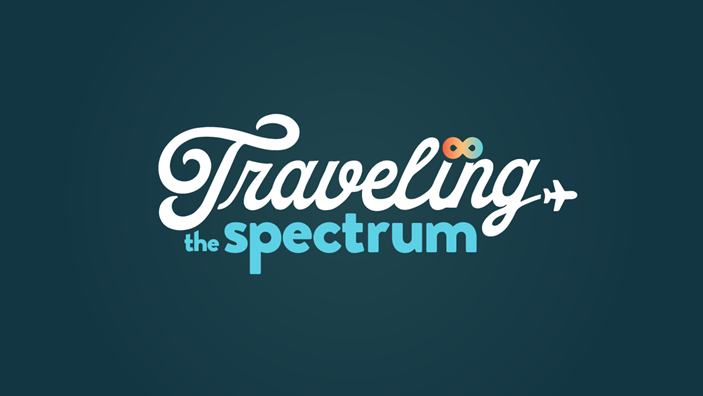
True inclusion goes beyond meeting accessibility standards—it’s about celebrating every traveler for who they are. This article explores how DMOs can transform their approach from merely accommodating disabilities to creating welcoming, joyful experiences that make everyone feel valued, understood, and celebrated at your destination.
Accessibility isn’t just about making spaces accessible—it’s about making people feel welcome, valued, and celebrated. This idea was brought into sharp focus for me during the filming of Season 2 of Traveling the Spectrum. One of the moms, whose son has Autism, made a comment that fundamentally changed the way I view accessibility. She said, “It’s not just about accommodating him, and it’s not even about accepting him. What I saw here in Myrtle Beach was something more—you celebrated him for who he is. That’s the difference. It’s about moving beyond just ‘fitting in’ to truly making him feel like he belongs.”
That moment served as a catalyst for this article. It made me realize that accessibility shouldn’t just be about meeting needs—it should go further to create environments where people feel genuinely understood, valued, and celebrated for who they are. Too often, accessibility efforts are framed as something we have to do to comply with standards, rather than something we want to do to enhance the experience for every visitor.

But what if we flipped the narrative? What if, instead of focusing solely on meeting minimum requirements, we started looking at accessibility as an opportunity to elevate the visitor experience for everyone?
By shifting the mindset from “accommodating” to “celebrating,” DMOs can move beyond basic modifications and create environments that actively invite people with disabilities to explore, engage, and enjoy. This shift doesn’t just benefit travelers with disabilities—it enhances the experience for everyone, creating a more inclusive and welcoming destination.
Here’s how DMOs can make this transformation:

Step 1: Change the Language—From Compliance to Celebration
Words matter. The language you use when talking about accessibility sets the tone for how your destination is perceived. Instead of framing accessibility improvements as meeting a requirement, highlight them as enhancements that elevate the entire visitor experience. When you update your communications, consider using phrases like:
• “Designed for Everyone” instead of “Accessible for Disabilities”
• “Inclusive Features” rather than “Special Accommodations”
• “Celebrating Diverse Needs” instead of “Meeting Accessibility Standards”
Changing your language doesn’t erase the practical importance of accessibility, but it does create a more inviting and celebratory atmosphere. It shifts the focus from what’s being “fixed” to what’s being enhanced, making people with disabilities feel genuinely welcome, not just accommodated.
Takeaway #1: Words Shape Experiences
Updating your language is an easy yet powerful first step in reframing accessibility as an essential element of great hospitality. Think about how your signage, brochures, and online content describe accessibility. The right words can signal that your destination values and celebrates every traveler as an individual.
Step 2: Spotlight Stories of Real Visitors
It’s one thing to say your destination is inclusive—it’s another to show it through real stories. Highlighting personal experiences of visitors with disabilities can transform accessibility from an abstract concept into something relatable and inspiring. Feature testimonials, videos, and blog posts from travelers who have explored your destination and felt genuinely welcomed.
For example, in the story I shared earlier in this article, the mom didn’t just comment on the accessibility features we had in place—she reflected on the interactions their family had with other people and how it felt to have her son celebrated for who he is. That type of personal narrative goes beyond ramps and sensory-friendly attractions. It turns accessibility into a human-centered narrative, showing other travelers that your destination isn’t just meeting requirements—it’s a place where they can be themselves, feel supported, and be celebrated.
Takeaway #2: Real People, Real Connections
When you celebrate the stories of real visitors, you’re not just promoting accessibility—you’re building trust and showing potential travelers that they’re a priority, not an afterthought. Personal stories turn accommodations into powerful testimonies of inclusivity and belonging.
Step 3: Build Experiences That Celebrate Diverse Abilities
Beyond simply making things accessible, think about how you can actively celebrate diverse abilities through curated experiences. Could your destination host events that specifically highlight adaptive sports, art created by people with disabilities, or events tailored to individuals with sensory triggers? These types of events don’t just make your destination more accessible—they spotlight and celebrate the talents, interests, and stories of people with disabilities.
For example, hosting an annual Inclusive Art Festival or partnering with local groups to offer accessible tours designed by people with disabilities can showcase your destination as a leader in inclusive travel. It shifts the focus from making spaces usable to making experiences enjoyable and memorable for everyone.
Takeaway #3: Create Experiences that Go Beyond Accessibility
By designing experiences that actively celebrate diverse abilities, you’re showing that your destination isn’t just “accommodating” visitors—it’s elevating their experience and showcasing the unique stories they bring with them.
Step 4: Involve the Community and Make Accessibility a Core Value
To genuinely celebrate visitors with disabilities, inclusion needs to become part of your destination’s core values, embraced by your entire community. Engage local businesses, attractions, and hospitality providers in this mission by providing training and resources on welcoming visitors with diverse needs. When accessibility becomes a community-wide effort, it’s no longer just a checkbox—it’s a shared value that transforms the destination as a whole.
For instance, consider creating an “Accessibility Ambassador” program where local businesses can earn a certification by completing training and implementing inclusive practices. This not only improves the experience for visitors but also helps local stakeholders understand the broader benefits of accessibility, shifting from compliance to community pride.
Takeaway #4: True Inclusion Requires a Community Effort
When accessibility becomes part of your destination’s culture, it moves beyond individual efforts and becomes a shared value that makes everyone—visitors and residents alike—feel celebrated and welcome.
Final Thought: Celebrating Every Traveler’s Unique Story
Moving from accommodating to celebrating is about more than physical adjustments—it’s about changing how we think about inclusion. It’s about creating environments where every traveler, regardless of their abilities, feels not just accepted but celebrated. By making accessibility a value, a story, and a shared goal, DMOs can become leaders in redefining what it means to be a truly inclusive destination.
Submit Your Thought Leadership

Share your thought leadership with the Destinations International team! Learn how to submit a case study, blog or other piece of content to DI.


